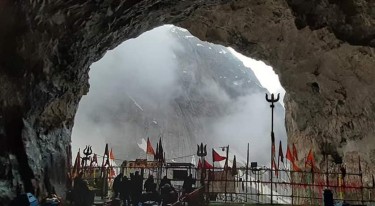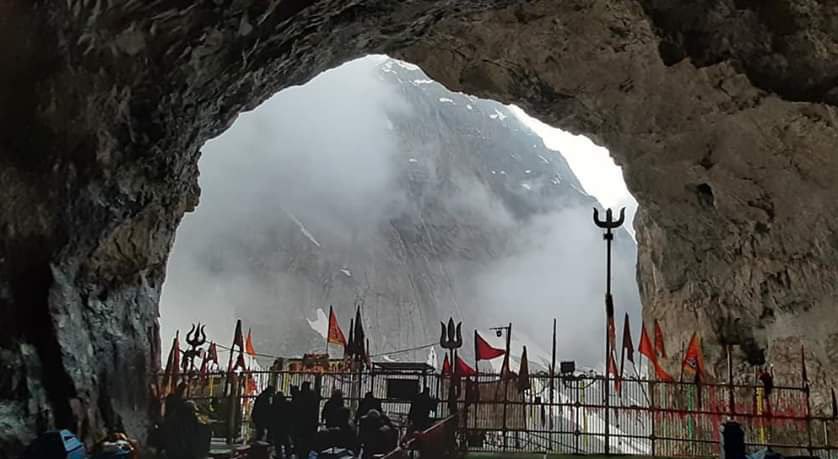Amarnath
The Mystical Marvel: Unraveling the Science Behind the Formation of the Amarnath Cave
By - Tribazz
25 August, 2023


Nestled high in the majestic Himalayas of Jammu and Kashmir, the Amarnath Cave stands as an enigmatic marvel that has captured the hearts and minds of millions for centuries. Believed to be the abode of Lord Shiva, the cave's unique formation—housing the iconic ice lingam—elicits wonder and devotion from pilgrims who undertake the challenging Amarnath Yatra. But beyond its spiritual significance, the cave's formation is a testament to the intricate interplay of geological and climatic forces that have shaped this awe-inspiring natural wonder.
Geological Genesis: The Birth of a Cave
The Amarnath Cave's journey began millions of years ago when the Indian subcontinent began its slow but relentless collision with the Eurasian plate. This colossal tectonic collision gave rise to the mighty Himalayan mountain range and the complex geological processes that shaped the landscape we see today. The cave itself owes its existence to the action of these titanic forces.
The cave is formed primarily from limestone—a sedimentary rock rich in calcium carbonate. Over the eons, water infiltrated the limestone, dissolving it through a process known as chemical weathering. This process, aided by the natural acidity of rainwater, created intricate networks of cracks and fissures within the rock.
Glacial Sculpting: The Hand of Ice
While geological forces set the stage, glacial activity played a crucial role in sculpting the Amarnath Cave into its current form. During the last Ice Age, glaciers in the region advanced and retreated, causing erosion and carving out valleys. As the glaciers retreated, they left behind a landscape marked by their passage.
The glacial retreat also led to the deposition of massive amounts of sediment and debris, forming moraines and creating natural depressions in the terrain. One such depression eventually became the site of the Amarnath Cave. The unique combination of chemical weathering, glacial erosion, and sediment deposition set the scene for the cave's eventual formation.
The Ice Lingam Phenomenon
The most remarkable feature of the Amarnath Cave is undoubtedly the ice lingam that forms each year. This phenomenon occurs due to a confluence of factors, including the unique microclimate within the cave, which experiences temperature differentials between day and night. During the day, the temperature inside the cave rises, causing some of the ice to melt. At night, however, the temperature drops dramatically, leading to the refreezing of the water.
This process of melting and refreezing is what gives rise to the ice lingam—an impressive natural structure that slowly grows over the course of the pilgrimage season. The continuous buildup of ice eventually takes on the form of a lingam, a representation of Lord Shiva, and becomes the focal point of devotion for the pilgrims.
The Amarnath Cave stands as a testament to the incredible power of geological processes and climatic variations to shape the natural world in astonishing ways. Its intricate formation, from the dissolution of limestone to the sculpting effects of glaciers, culminates in the annual phenomenon of the ice lingam. While science explains the mechanisms behind this marvel, the spiritual significance it holds for devotees remains unwavering. As pilgrims undertake the Amarnath Yatra to pay homage to Lord Shiva, they are also witnesses to the grandeur of the natural world and the interplay of forces that have given rise to this sacred sanctuary.